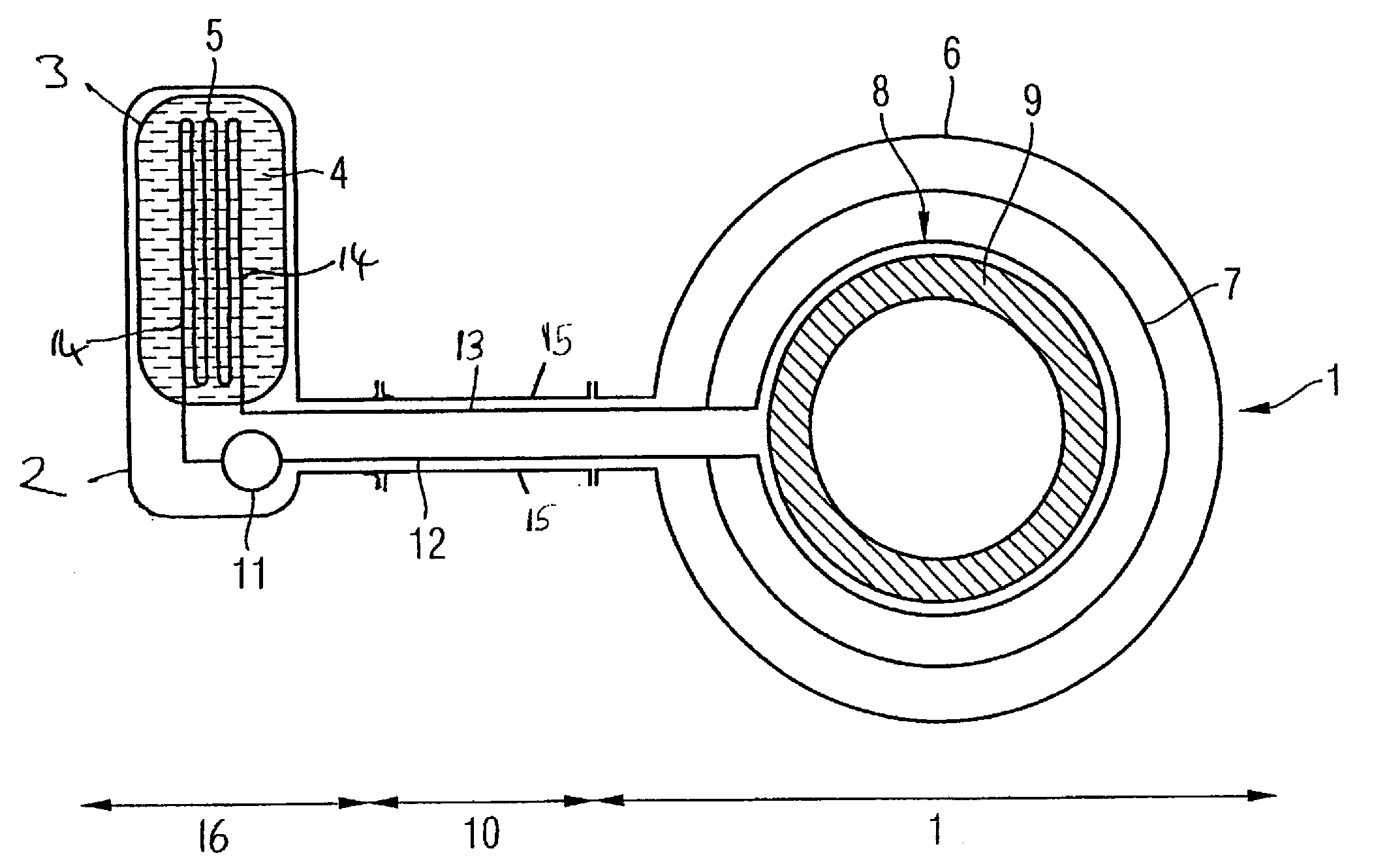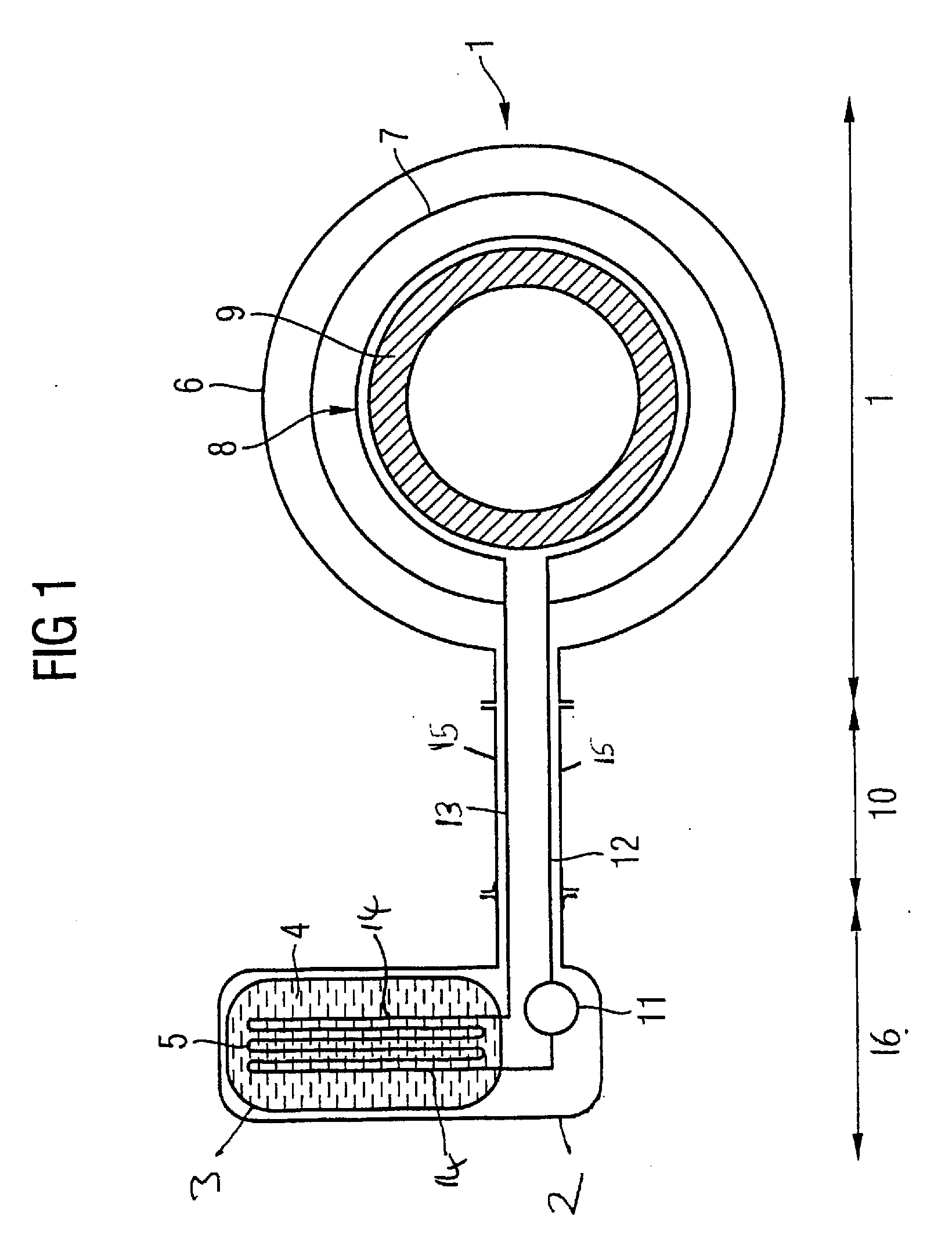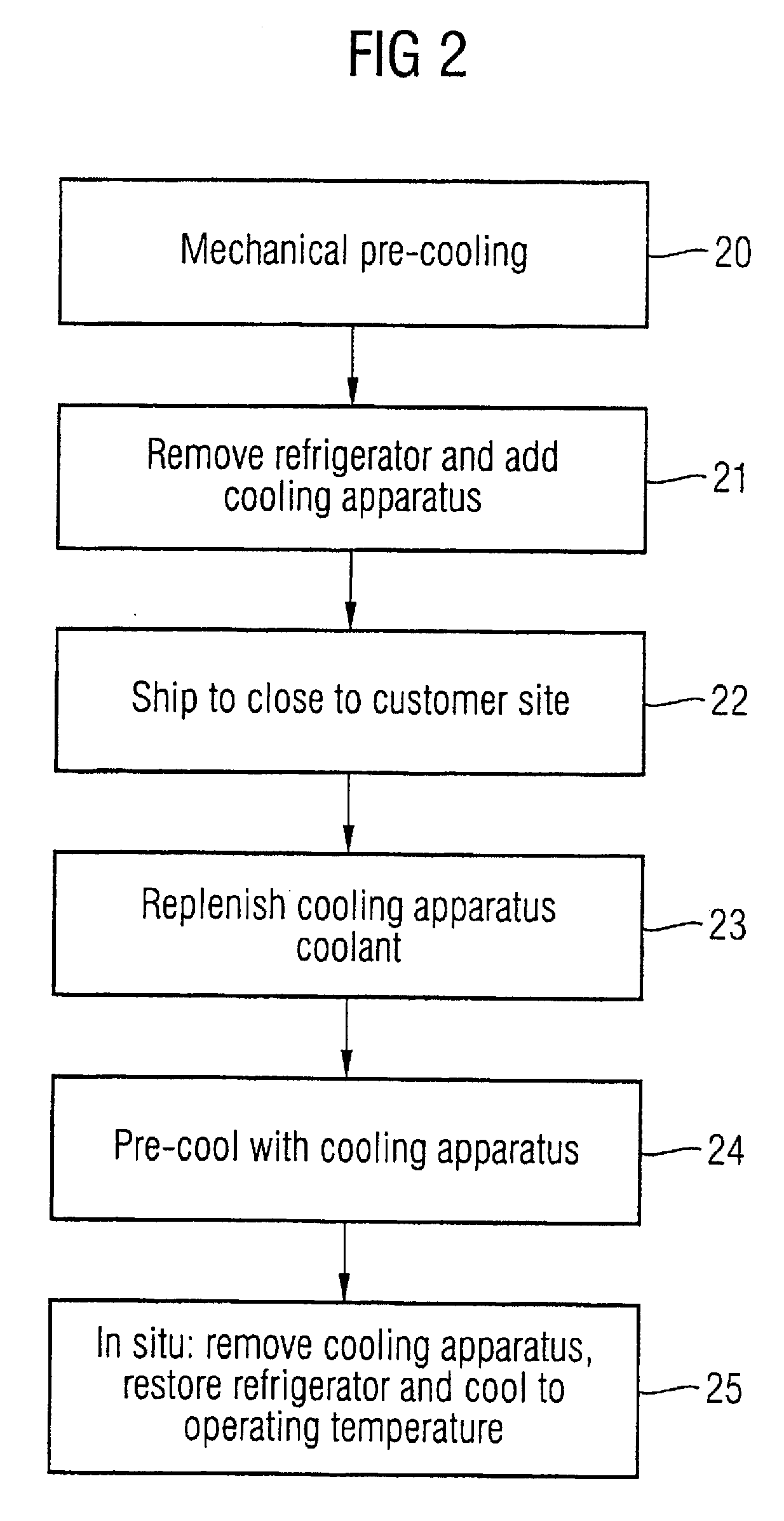Method and apparatus for maintaining a superconducting system at a predetermined temperature during transit
- Summary
- Abstract
- Description
- Claims
- Application Information
AI Technical Summary
Benefits of technology
Problems solved by technology
Method used
Image
Examples
Embodiment Construction
[0024]When transporting cryostats, they can either be shipped warm and cooled down on arrival, or kept cool during transport. Conventionally, nitrogen gas is not used on cargo ships because of the risk to the crew of suffocation, so when shipping by sea, helium gas as a coolant is preferred. For air transport, nitrogen gas is preferred. In the present invention, in transport, the refrigerator, or cold head, is removed from the cryostat and is replaced with a coolant pack of a solid cryogen, as for air transport in particular, active cryostats are not permitted. Solid nitrogen is a good choice in terms of being relatively low cost, being easy to obtain and having relatively high heat capacity. This allows cooling to be provided in a relatively compact package without the need for external power, which can be an issue when in transit. In the present invention, the solid nitrogen is used to keep the cryostat cool in transit, or to re-cool a cryostat when it arrives at its destination. ...
PUM
 Login to View More
Login to View More Abstract
Description
Claims
Application Information
 Login to View More
Login to View More - Generate Ideas
- Intellectual Property
- Life Sciences
- Materials
- Tech Scout
- Unparalleled Data Quality
- Higher Quality Content
- 60% Fewer Hallucinations
Browse by: Latest US Patents, China's latest patents, Technical Efficacy Thesaurus, Application Domain, Technology Topic, Popular Technical Reports.
© 2025 PatSnap. All rights reserved.Legal|Privacy policy|Modern Slavery Act Transparency Statement|Sitemap|About US| Contact US: help@patsnap.com



